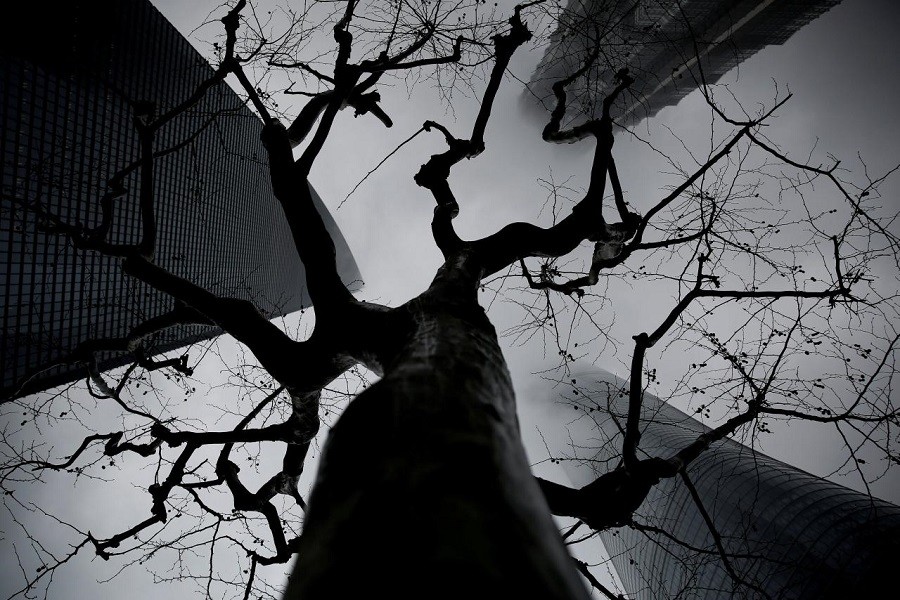A raft of Chinese data in coming weeks is expected to show the world’s second-largest economy came under growing pressure in November as the government intensified crackdowns on polluting industries and financial risks.
Beijing has pledged to switch course from a prolonged, debt-fuelled investment binge to higher quality and more balanced growth, as signalled by President Xi Jinping during an agenda-setting Communist Party Congress in October.
But China watchers are uncertain over how much tolerance the government will have for the inevitable slowdown in economic activity that will follow.
Besides ramped-up efforts to shut down factories in some provinces to reduce winter smog, authorities unveiled fresh regulatory measures last month for the financial sector, clamping down on high-risk lending and halting some dubious infrastructure projects that would swell local governments’ debt.
Economists believe such measures will lead to a slight moderation in China’s growth in the fourth quarter to around 6.7 per cent, after a forecast-beating 6.9 per cent in the first nine months of the year.
Growth in factory output is seen slowing to 6 per cent on-year in November from October’s 6.2 per cent, according to a Reuters poll of 23 economists.
But forecasts varied widely, with the pollution crackdown expected to create a lot of noise around industrial data. Some steel mills in the south, for example, are believed to have cranked up output to take market share as their counterparts in the north have had to curtail production.
Fixed-asset investment growth is also predicted to have eased to 7.2 per cent in January-November, from a 7.3 per cent rise in the first 10 months of the year.
A slowing property market under persistent government curbs is also to blame, analysts say.
But analysts do not see a risk of a sharp economic slowdown at this point, with a burgeoning tech and services sector and rising household consumption offsetting much of the drag from the slowdown in “smokestack” industries.
Retail sales growth is expected to accelerate to 10.2 per cent on-year from 10 per cent the previous month, buoyed by the annual “Singles’ Day” shopping frenzy promoted by e-commerce giant Alibaba.
Industrial output, fixed asset investment and retail sales data are set to be published on December 14.
THE BALANCING ACT
A government-backed construction boom this year has stimulated a commodities rally from cement to steel, putting Beijing comfortably on track to meet its annual economic growth target of around 6.5 per cent.
But the government’s “deleveraging” campaign also has led to a rise in borrowing costs, which threaten to curb investment and company profits.
Beijing’s solution has been to keep liquidity conditions relatively fluid when markets get overly nervous.
While working to reduce riskier activity like high levels of interbank lending, the central bank also has frequently injected funds into money markets to temper rate rises and ensure companies and local governments can meet regular funding needs.
Bank lending is expected to have picked up in November, with new loans seen rising to 800 billion yuan ($121 billion) from around 663 billion in October.
The government drive to rein in shadow banking has pushed some off-balance-sheet lending back onto banks’ books, even as mortgage lending is expected to slow due to restrictions on property speculation.
Other data is expected to show inflationary pressures in China moderated slightly.
The producer price index (PPI) is expected to rise to 5.9 per cent in November, down sharply from 6.9 per cent in October likely due to a high base effect but still elevated enough to extend this year’s run of stellar industrial profit growth.
However, estimates again varied widely as prices of building materials such as steel have rebounded sharply on fears the pollution shutdowns could lead to supply shortages.
Consumer inflation is seen easing slightly to 1.8 per cent, well within the government target this year of 3 per cent.
China’s foreign exchange reserves are expected to be up slightly, rising for a 10th month to $3.12 trillion, as capital controls and a weakening dollar continue to staunch outflows.
TRADE TENSIONS
External risks for China also may be flaring again, such as worries of growing trade protectionism.
US President Donald Trump has repeatedly called on Beijing to reduce the large surplus in bilateral trade, which the administration deems to be unfair, and political issues such as North Korea appear to be also putting trade ties at stake.
Trump’s maiden trip in November to Beijing appeared to be fruitful as he claimed to have taken home over $250 billion in deals, but his administration has since moved aggressively to target what it says is China’s dumping of aluminium.
While economists say global demand remains solid, they expect China’s export growth to have slowed to 5 per cent in November on-year, from 6.9 per cent the previous month.
Imports may have risen 11.3 per cent, again slowing sharply from the previous month, but still producing a trade surplus of $35 billion.
China is due to announce foreign exchange reserves data on December 7, followed by trade and inflation data on December 8 and December 9, respectively, while loan and money data is expected anytime from December 10 to December 15.


